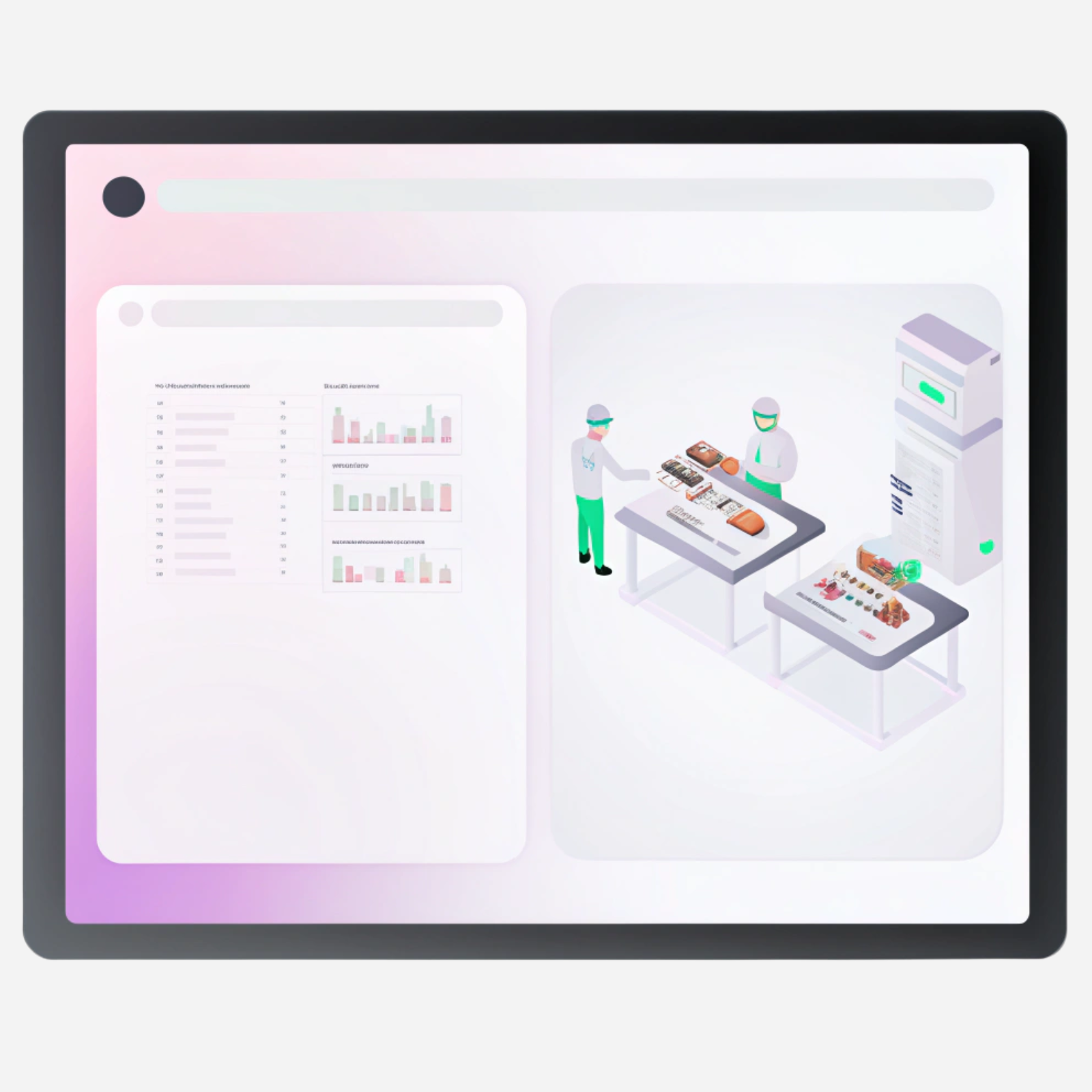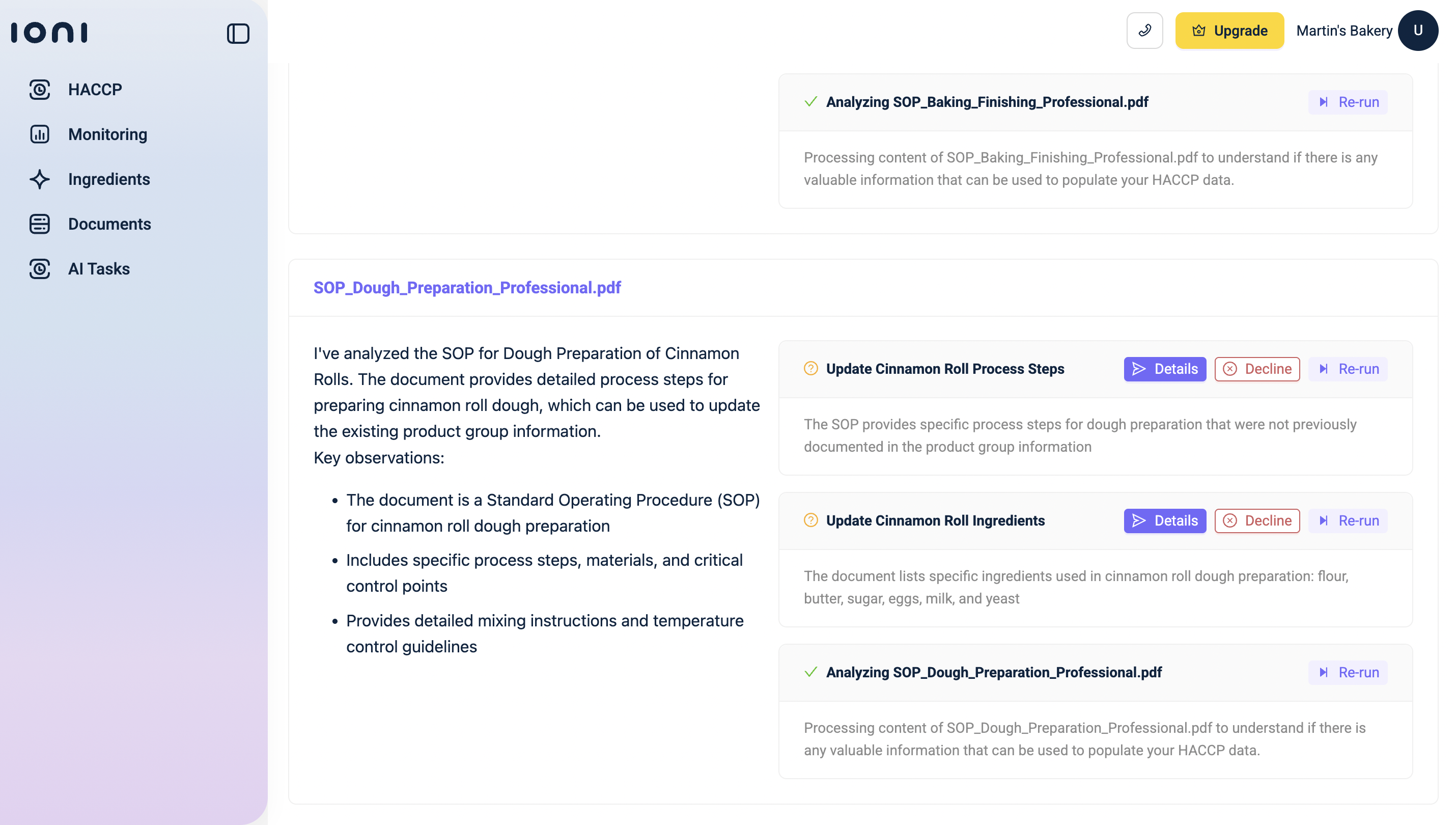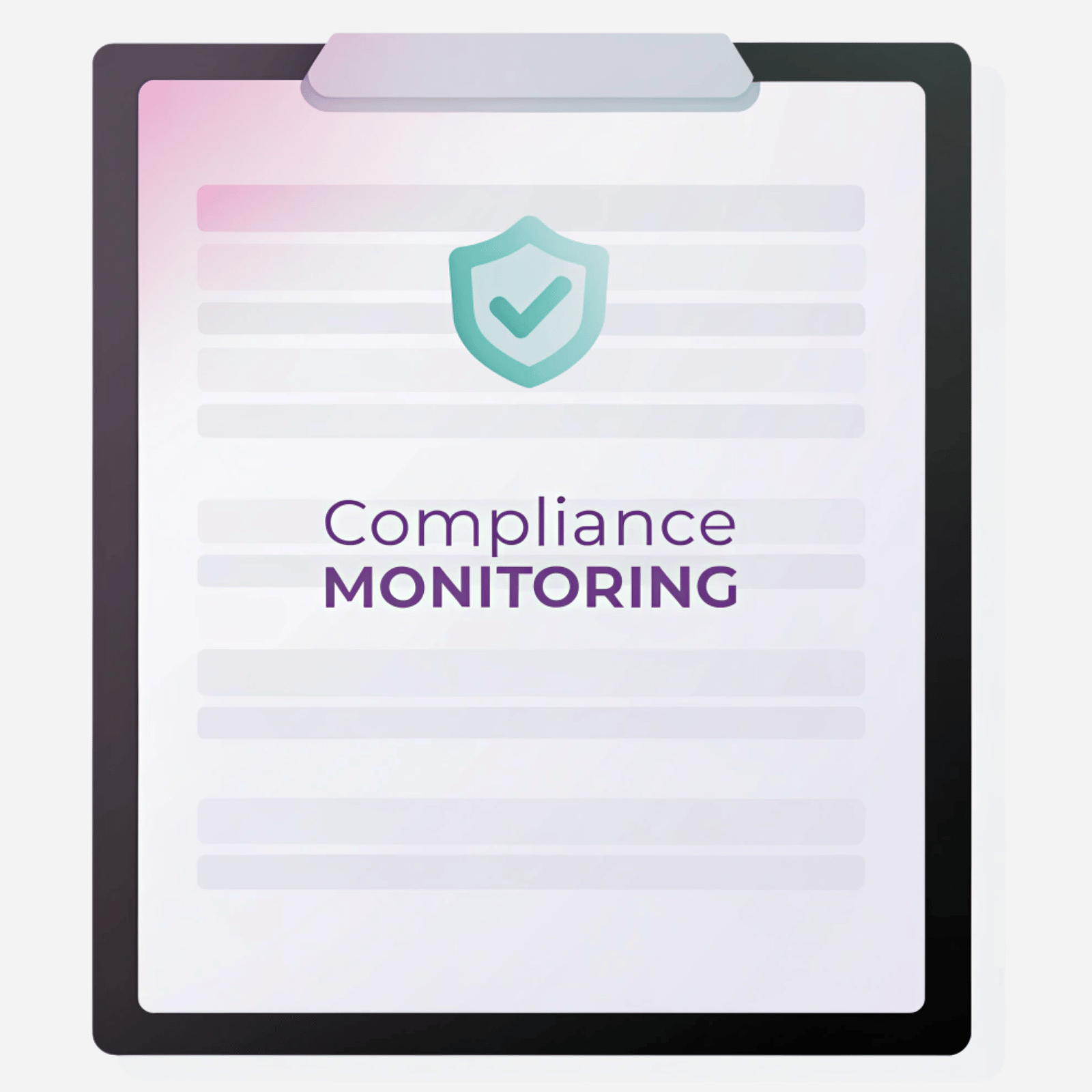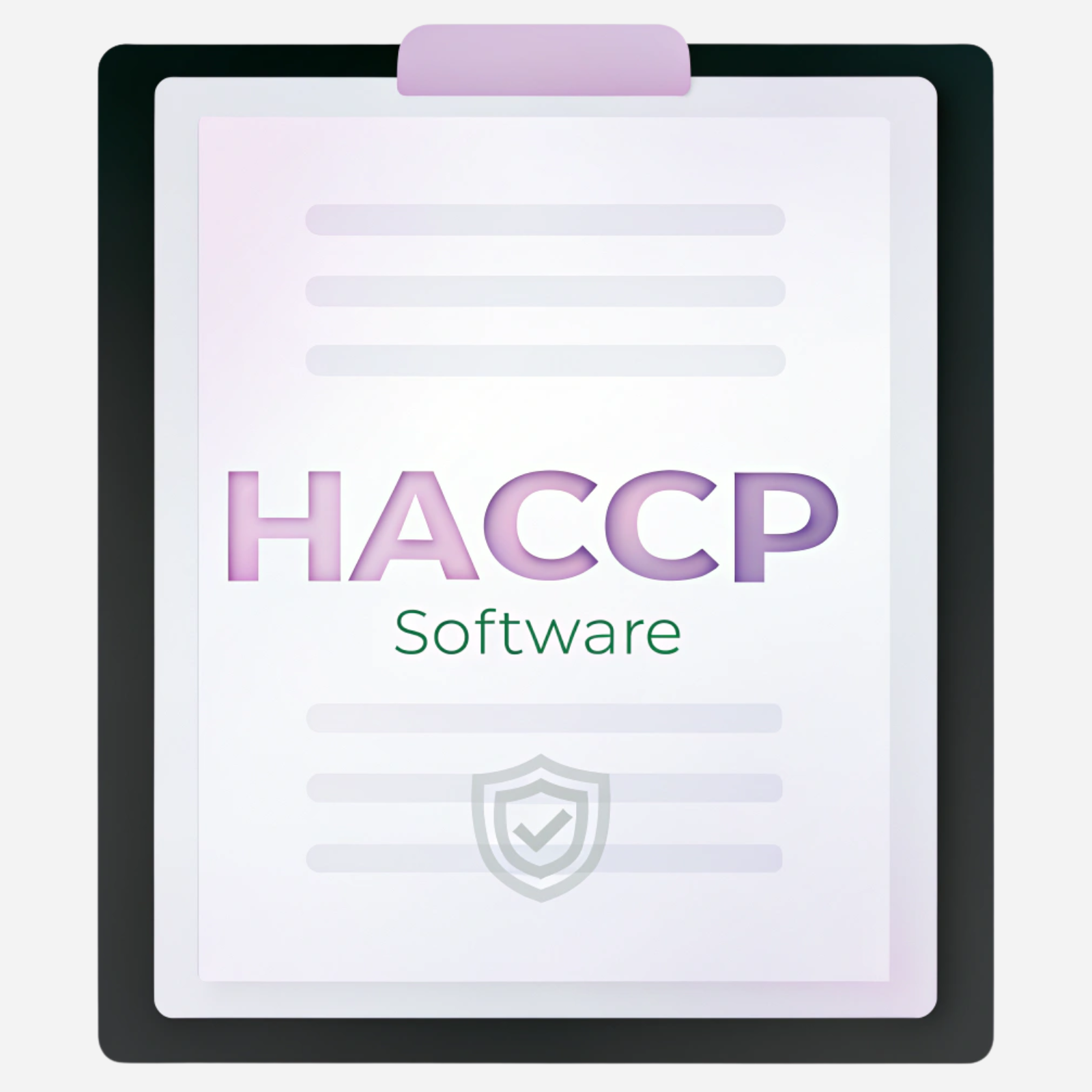
Intro: The Challenge of Food Safety Software Implementation
Food manufacturers are navigating a growing landscape of digital solutions designed to improve compliance, traceability, and documentation. Platforms for food safety software implementation promise faster reporting, enhanced visibility, and tighter control over production.
Adoption, however, remains gradual. Many businesses continue to rely on spreadsheets, legacy software, or paper-based records to manage daily operations, creating an inherent tension when introducing new systems.
During FSMA implementation and the broader Implementation of Food Safety Management Systems, these challenges intensify. Integrating new software requires careful coordination with production schedules, audits, and documentation practices. The complexity of modern supply chains adds further hurdles. Inconsistent data formats, varying supplier records, and multiple product lines make standardization and record consolidation difficult.
Key challenges at a glance:
- Existing systems: Reliance on spreadsheets, legacy software, or paper records slows adoption.
- Operational pressure: Teams must maintain production, audits, and documentation during integration.
- Regulatory demands: FSMA deadlines add urgency, making disruptions riskier.
- Supply chain complexity: Multiple suppliers and formats require extensive standardization efforts.
- Resource limitations: Smaller facilities often have limited staff to manage new software implementation.
AI implementation in food safety provides a practical pathway through these challenges. By automating setup, structuring workflows, and interpreting existing documents, AI allows even smaller operations with multiple responsibilities to modernize efficiently.
These capabilities reduce barriers and make software adoption more attainable, laying the foundation for faster and more reliable compliance.
Why Companies Hesitate to Switch Systems During FSMA Implementation
Even when the advantages of modern platforms are clear, operational realities often delay adoption. Businesses face multiple practical barriers that go beyond technical setup.
Primary factors contributing to hesitation:
- Concerns About Disruption:
- Teams must maintain production and compliance while learning new workflows.
- Switching platforms can create downtime or errors that affect audits or reporting.
- Data Migration Complexity:
- The Implementation of Food Safety Management Systems requires transferring ingredient lists, HACCP plans, and audit records.
- Ensuring accuracy and consistency during migration adds a significant operational burden.
- Training and Staff Readiness:
- Quality and operations teams must adapt to digital workflows while handling ongoing production and FSMA deadlines.
- Balancing these competing priorities slows onboarding and implementation.
- Perceived Cost vs. Benefit:
- Some companies question whether the effort of adoption justifies the operational advantages.
- AI implementation in food safety addresses this by simplifying setup, reducing manual effort, and generating immediate value.
Bridging Hesitation with Smarter, More Adaptive Solutions
A growing category of food safety software now focuses on flexibility rather than replacement. These systems are designed to integrate with existing records, documents, and ERP data instead of forcing teams to start from zero.
Such tools use AI to analyze uploaded SOPs, detect missing elements, and automatically generate hazards, process steps, and product information - removing many of the manual steps that once delayed onboarding.
This new generation of food safety software implementation tools shortens transition periods, aligns digital and paper records, and helps facilities meet FSMA and GFSI requirements faster. It reduces the friction that previously made modernization feel risky, proving that technology can fit around operations, not the other way around.
This is the foundation on which IONI was built - combining document intelligence, process mapping, and automated setup to make modernization operationally practical for real food manufacturers.
Operational outcomes after adoption:
- Faster compliance readiness.
- Reduced errors and inconsistencies in documentation.
- Improved traceability across products and supply chains.
- Streamlined integration with existing operational workflows.
Understanding these operational and behavioral barriers clarifies why hesitation exists. Adoption is rarely about resistance to technology; it reflects the challenge of balancing regulatory compliance, operational continuity, and team capacity.
Once these challenges are addressed, companies experience the practical benefits of AI-driven food safety software implementation and the efficiencies it introduces to daily operations.
How AI Transforms Onboarding and AI Implementation in Food Safety
The operational barriers discussed in the previous section - disruption, data migration, and staff readiness - are precisely where AI adds measurable value. Once hesitation is understood, the role of AI in accelerating food safety software implementation becomes clear.
AI streamlines setup and reshapes the initial adoption process into a structured, guided, and efficient workflow.
Key Transformations Enabled by AI:
- Automated Data Interpretation: AI systems can analyze existing documents, such as HACCP plans and audit records, to identify critical control points and potential hazards. This automation reduces manual data entry and minimizes human error.
- Dynamic Workflow Structuring: AI tailors workflows to align with specific operational processes, ensuring that the system adapts to the unique needs of each facility. This customization enhances user adoption and operational efficiency.
- Accelerated Onboarding Processes: With AI-driven tools, the setup phase is expedited, allowing teams to begin utilizing the system effectively within days. This rapid deployment is crucial during FSMA implementation, where timely compliance is essential.
- Continuous System Adaptation: AI systems learn from ongoing operations, refining workflows and recommendations based on real-time data. This adaptability ensures that the system evolves in tandem with operational changes.
- Enhanced Compliance and Traceability: AI enhances traceability by integrating data across the supply chain, providing real-time insights into product movements and potential risks. This capability is vital for meeting FSMA requirements and ensuring food safety.
IONI: Applying AI Directly to the Onboarding Phase
IONI builds on this evolution with a focused approach to AI-assisted onboarding. Users simply upload their existing documentation - from HACCP plans and supplier management files to audit reports and ingredient specifications - and IONI’s AI automatically interprets, organizes, and maps the information into a ready-to-use structure.
This approach removes much of the friction that traditionally slows adoption during FSMA implementation. Teams begin working with familiar processes in a digital environment almost immediately, gaining both efficiency and confidence in the system’s accuracy.
By embedding AI into onboarding, IONI eliminates the typical trade-off between learning a new system and maintaining daily operations. It creates a pathway for fast, accurate, and structured adoption, ensuring that AI implementation in food safety delivers measurable value from day one.
Business Benefits of Using AI in Food Safety Software
AI implementation in food safety drives measurable improvements across production, compliance, and operational decision-making.
The advantages vary by business type, making food safety software implementation and AI implementation in food safety valuable for every segment of the industry.
1. Ready-to-Eat (RTE) & Prepared Foods
Typical Products: Cooked meals, salads, sandwiches, pasta, soups, dressings
Why AI is Valuable:
- Complex Ingredient Tracking: AI monitors multiple ingredients and allergens across recipes, reducing labeling errors.
- Regulatory Readiness: Accelerates FSMA implementation by automatically generating audit-ready documentation.
Example: A salad producer can use AI to track allergens across 20 recipes, reducing labeling mistakes and shortening audit preparation from weeks to days.
2. Dairy & Plant-Based Alternatives
Typical Products: Cheese, yogurt, soy/almond milk, vegan spreads
Why AI is Valuable:
- Allergen and Risk Management: AI identifies potential hazards across ingredient lists and production steps.
- Traceability and Documentation: Simplifies Implementation of Food Safety Management Systems by integrating supplier and batch information.
Example: A yogurt manufacturer can use AI to organize HACCP plans and ingredient documentation, generating full compliance reports automatically.
3. Sauces, Condiments, and Dips
Typical Products: Mayo, hummus, dressings, BBQ sauces
Why AI is Valuable:
- Batch Documentation: Automatically tracks formulations, lot numbers, and shelf-life information.
- High SKU Volume: Reduces manual work for multiple product variants.
Example: A hummus producer can use AI to manage 15 SKUs across three production lines, cutting documentation errors by 30%.
4. Bakery & Confectionery
Typical Products: Breads, pastries, chocolate, desserts
Why AI is Valuable:
- Allergen and Labeling Complexity: Tracks nuts, gluten, dairy, and other allergens across multiple SKUs.
- Frequent New Products: Automates compliance documentation for new recipes.
Example: A pastry manufacturer can introduce five seasonal products; AI-generated all required ingredients, allergens, and process documentation automatically.
5. Beverages (Non-Alcoholic)
Typical Products: Juices, kombucha, functional drinks, smoothies
Why AI is Valuable:
- Recipe Updates: AI tracks frequent formulation changes and generates updated compliance documentation.
- Traceability and Reporting: Maintains FSMA-ready records for ingredients, batches, and production processes.
Example: A kombucha producer can update five new flavors; AI automatically generated HACCP documentation and ingredient lists for each batch.
6. Frozen & Packaged Foods
Typical Products: Ready-to-cook meals, frozen vegetables, appetizers
Why AI is Valuable:
- Multi-Step Process Documentation: Tracks each step in production for compliance purposes.
- Supplier Verification: Integrates supplier certifications and batch records into a single system.
Example: A frozen meal co-packer can consolidate supplier batch data and production documentation into AI workflows, preventing labeling errors.
7. Plant-Based / Alternative Protein
Typical Products: Meat substitutes, vegan patties, fermented products
Why AI is Valuable:
- Rapidly Evolving Recipes: AI tracks new ingredient formulations and processes.
- Hazard Identification: Highlights potential cross-contamination or allergen risks in new recipes.
Example: A vegan patty manufacturer can use AI to manage new experimental formulations, ensuring all batches have proper documentation and hazard analysis.
8. Co-Packers / Private Label Producers
Typical Products: Multiple brand products for contract manufacturing
Why AI is Valuable:
- Heavy Documentation Load: AI automates reports for different client specifications.
- Multi-Client Compliance: Supports FSMA implementation across diverse product lines.
- Workflow Standardization: Ensures consistent monitoring for all client requirements.
Example: A co-packer producing for ten brands can use AI to consolidate 200+ compliance documents, cutting preparation time by 50%.
Practical Onboarding Timelines and AI Applications in Food Safety Software
After understanding the diverse benefits that AI brings to food safety, from automating hazard analysis and ensuring real-time monitoring to simplifying compliance and audit readiness, the next step for any facility is implementation and onboarding.
This phase involves translating awareness into action: integrating AI tools into existing quality systems, training teams to use them effectively, and aligning new digital processes with regulatory and operational requirements. A well-structured onboarding process not only ensures a smoother transition but also maximizes the return on investment by helping teams quickly adapt and realize measurable improvements in safety, efficiency, and compliance performance.
AI simplifies this process, making the adoption of modern food safety software achievable in days rather than weeks, even for small or multi-product operations.
Key Aspects of AI-Powered Onboarding:
- Automated Document Analysis:
- AI scans existing HACCP plans, SOPs, audit records, and ingredient lists.
- It identifies hazards, critical control points, allergens, and gaps in compliance.
- Impact: Teams avoid manual review of hundreds of documents, reducing onboarding effort by 50–70%.
- Workflow Structuring:
- AI creates structured workflows aligned with actual operations.
- Each process - whether recipe management, batch tracking, or compliance reporting - is mapped automatically.
- Impact: Staff can begin using the system immediately with minimal adjustments to daily routines.
- Batch and SKU Integration:
- For facilities with multiple products, AI consolidates recipes, SKUs, and ingredient information into a unified platform.
- Impact: Ready-to-eat meals, sauces, bakery products, or beverages with complex formulations are fully documented from day one.
- Rapid Onboarding Timelines by Facility Type:
- Small to Mid-Sized Facilities: 2–5 days for initial setup and document integration.
- Multi-Product Facilities / Co-Packers: 5–10 days for integrating multiple brands and SKUs.
- New Product Launches: AI can add new formulations in 1–2 days, generating updated compliance documentation instantly.
- Immediate FSMA Implementation Support:
- AI identifies compliance gaps and generates audit-ready documentation.
- Teams can meet regulatory deadlines without waiting for weeks of manual setup.
- Impact: Facilities maintain ongoing production while completing onboarding tasks.
- Staff Training Integration:
- AI guides users through workflows step by step.
- Staff training occurs concurrently with system setup, eliminating downtime.
- Impact: Teams quickly gain confidence in managing daily operations within the new system.
AI-powered onboarding removes the traditional friction of implementing food safety software. By automating document review, workflow structuring, and compliance reporting, facilities can adopt modern systems efficiently while maintaining production and meeting FSMA deadlines.
The result is faster adoption, fewer errors, and immediate operational benefits, demonstrating that the Implementation of Food Safety Management Systems with AI is both practical and highly effective across all types of food businesses.
IONI: AI-Powered Onboarding and Automation for Food Safety
Transitioning to a digital system for food safety software implementation often feels daunting - especially when teams already rely on established spreadsheets, paper SOPs, and manual verification. Yet the real transformation begins when onboarding is no longer a burden but a structured, intelligent process.
IONI turns the Implementation of Food Safety Management Systems into a guided, AI-supported journey: from document upload to full operational readiness. The platform shortens onboarding timelines from months to days by automatically analyzing documents, mapping processes, and connecting your data ecosystem.
Step 1. Upload & Structure Your Documents
Start with what you already have - your existing documentation. Upload Standard Operating Procedures (SOPs), supplier management records, training plans, or cross-contamination prevention procedures.
IONI’s AI implementation in food safety analyzes and structures each file automatically, detecting:
- Products and ingredients listed within procedures
- Process steps such as blending, heating, cooling, or packaging
- Potential hazards (e.g., contamination, allergen risk, mislabeling)
- Control or monitoring points referenced in the text
.png)
Example use cases:
- A sauce manufacturer uploads “Batch Mixing and Filling Procedure.” IONI detects allergens, ingredient dependencies, and missing allergen statements.
- A bakery uploads “Cooking and Heating Procedure.” The AI extracts each process step and assigns hazards like undercooking or cross-contact.
This builds your digital food safety foundation - structured data that becomes instantly usable for FSMA audits or hazard analysis.
Step 2. AI Maps Processes and Fills Gaps
Next, IONI performs cross-document analysis. It reviews multiple SOPs simultaneously to ensure consistency and detect missing links.
If a cross-contamination policy is missing in a cooking procedure, the AI flags the gap and suggests uploading or linking a relevant SOP.

Key AI-driven capabilities:
- Connects ingredients, process steps, control points, and verification tasks
- Flags inconsistencies across suppliers and production procedures
- Ensures all FSMA-required controls are represented
This creates a living digital model of your facility, where every product, process, and document is connected, without manual mapping.
Step 3. Connect Your Data & Team
IONI integrates with your existing ERP or production software through APIs or CSV imports.
It automatically extracts batch data, traceability information, and inventory updates - connecting them to your food safety workflows.
.png)
Example use cases:
- A frozen food producer imports batches from SAP (Batch 001, Batch 002), automatically linked to product recipes and hazard monitoring records.
- A private label co-packer syncs multiple brand data streams while keeping documentation organized by customer requirements.
IONI also processes team information automatically. Upload a “Team Information” file - and the system extracts employee names, roles, and competencies. Each person is assigned to the correct responsibility area (QA, operations, HACCP) and invited automatically.
Step 4. Review, Verify, and Go Live
IONI’s dashboard visualizes every component of your Implementation of Food Safety Management Systems: products, hazards, CAPAs, records, and compliance metrics - all linked and validated.
Teams can then:
- Test internal processes by logging a few batches
- Verify traceability and corrective actions
- Confirm readiness for FSMA inspection
Once verified, your site goes fully live - with automated traceability, CAPA tracking, and continuous compliance monitoring.
Most facilities complete full onboarding in a couple of days, depending on document volume. The result is a fully operational, audit-ready system that evolves automatically with your operations.
Why This Matters
By automating the most time-consuming parts of onboarding, AI implementation in food safety transforms what was once a disruptive change into a strategic upgrade.
For most facilities, onboarding with IONI takes 2-3 days, depending on document volume. Instead of manually creating workflows, your data is extracted, validated, and structured automatically, giving you a compliant, operational digital system ready for audits and production.
Whether you produce sauces, bakery goods, plant-based alternatives, or frozen meals, IONI helps you implement food safety systems faster, with fewer errors and stronger traceability across your entire supply chain.
Get Started Today
Accelerate your food safety software implementation and simplify FSMA compliance with AI-powered onboarding. Start building a structured, automated system for your facility and reduce weeks of manual work into just days.
Request a demo or speak to an expert to see how IONI can streamline your compliance, minimize errors, and make your food safety processes fully operational from day one.
Conclusion
Modern food facilities face a growing array of regulatory requirements and operational complexities. Food safety software implementation is no longer optional - it is essential to maintain compliance, ensure traceability, and protect product quality.
Yet the initial effort required for onboarding has historically slowed adoption, especially during FSMA implementation or the broader Implementation of Food Safety Management Systems.
AI-driven platforms now make this process faster, more precise, and more manageable. By automatically analyzing SOPs, mapping process steps, detecting hazards, and connecting data across teams and systems, AI implementation in food safety reduces manual workload while improving accuracy. Facilities gain a fully operational digital system in days rather than weeks, with structured workflows, traceability, and compliance monitoring already in place.
The tangible benefits are clear across food sectors: faster compliance readiness, reduced errors, simplified audits, and seamless integration with existing production and ERP systems. By leveraging AI for onboarding and automation, companies can focus on quality, innovation, and operational continuity without sacrificing regulatory rigor.
Efficient adoption of modern food safety software no longer requires months of preparation. With the right tools, teams can move from paper and spreadsheets to a structured, intelligent, and compliant system quickly - turning a historically daunting process into a practical advantage.









